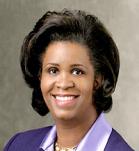By Tina Vasquez, Managing Editor
When we talk about the progress that has been made by women in corporate America, using gender to mean ‘all women’, what we’re actually referring to is the progress and gains that have been made by white women.
African-American women, who make up 13 percent of the female population in the US, are a long way from closing the racial and ethnic disparities they face, but there are some encouraging trends to report on this year. According to the Center for American Progress, African American women-owned businesses continue to grow despite significant financial and social obstacles. As a matter of fact, African American-owned businesses are the fastest-growing segment of the women-owned business market and are starting up at a rate six times higher than the national average. Even more impressive: The number of companies started by African American women grew nearly 258 percent from 1997 to 2013, which is great news for entrepreneurs.
In the corporate world, we look at the numbers first. In December of 2013 when FORBES published its annual list of the World’s 100 Most Powerful Women, 11 were black and they ranged from the First Lady to corporate executives, including the magnificent Ursula Burns, CEO of Xerox and the first African-American female CEO of a Fortune 500 company. Burns has an inspiring story, as she started on the bottom as a Xerox intern in 1980 and under her leadership, Xerox has transformed its image as a manufacturer of printers to a full-fledged services business. According to FORBES, in 2010, Xerox acquired business process outsourcing firm Affiliated Computer Services (ACS) and now gets half of its revenue from service businesses, like managing electronic ticket transactions, road tolls, and parking meters.
During the Prism awards fundraiser lunch at New York University last year, the CEO told attendees there is “a tidal wave of women business leaders coming” and the business world “would be silly” to ignore the large and growing pool of “talented women in America colleges.”
What Ursula said cannot be disputed. It is projected that women of color will make up 53 percent of the population by 2050, positioning them as vital to the economic future of the United States, especially as they become a greater share of the workforce. And make no mistake: It is vital that Corporate America understand, develop, and leverage this increasingly valuable and talented group of people.
When companies feature diverse teams, it has been proven to lead to more effective decision-making and it better positions companies to compete on the global stage, drawing in a wider customer base. Not only that, Workforce Magazine reports that when employees feel that they have a more diverse and inclusive workforce, turnover is almost 20 percent lower and employee effort is nearly 12 percent higher.
Also featured on FORBES list was Rosalind Brewer, President and CEO of Sam’s Club, a $56.4 billion division of Wal-Mart Stores. According to FORBES, Brewer was a college chemistry major who came to the big box chain in 2006 from consumer-products maker Kimberly-Clark Corp, where she started as a scientist. Brewer is the first woman and first African American to become the CEO of a Wal-Mart business unit.
It was recently announced by Catalyst that Brewer’s former employer, Kimberly-Clark, is one of the recipients of the 2014 Catalyst Award, a prestigious annual award honoring innovative initiatives that expand opportunities for women and business. Kimberly-Clark’s initiative, Unleash Your Power: Strengthening the Business With Women Leaders, addresses Kimberly-Clark’s need to look, think, and behave like the people who use and buy its products.
Addressing ‘Otherness’
Making sure that talented Black women are getting promoted to key roles should be keeping senior execs and HR heads up at night.
The good news is that ambitious, talented, and capable women of color are in the pipeline, but a recent Catalyst study found that “otherness” can be a significant barrier to success. As defined by the organization, otherness is about being different or having characteristics that set you apart from the dominant group or groups in a given context. In our white- and male-dominated business world, these characteristics become normative and those who feel like an “other” not only feel different, according to Catalyst, but also feel separated from the essential aspects of a group. If they do not experience belonging in a group, they may consequently be excluded.
According to Catalyst, in order to overcome the effects of ‘otherhood’, efforts need to be made to ensure fair and equitable decision-making regarding career development and advancement. Addressing the issue head-on will require putting mechanisms in place to guarantee those with backgrounds that differ from the majority are evaluated fairly.
Shining Examples
For Black History Month, theglasshammer.com will spend all of February celebrating talented, ambitious Black women who are making huge strides in their fields. Yesterday you met Accenture’s Managing Director of Federal Services, Tamara Fields. Later this month we’ll hear from RLJ Lodging Trust’s CFO Leslie Hale, one of just eight Black, female CFOs of a publicly traded company in the history of the US, and Barbara Edwards, the first in her family to come to the US. She is now Counsel for Shearman & Sterling, a far cry from her days working as a live-in housekeeper. These are just two of the many inspirational profiles we’ll bring you this month, as we hear at theglasshammer.com understand both the power and the importance of sharing these stories.
Here’s hoping 2014 is a fruitful year for Black women in business.









